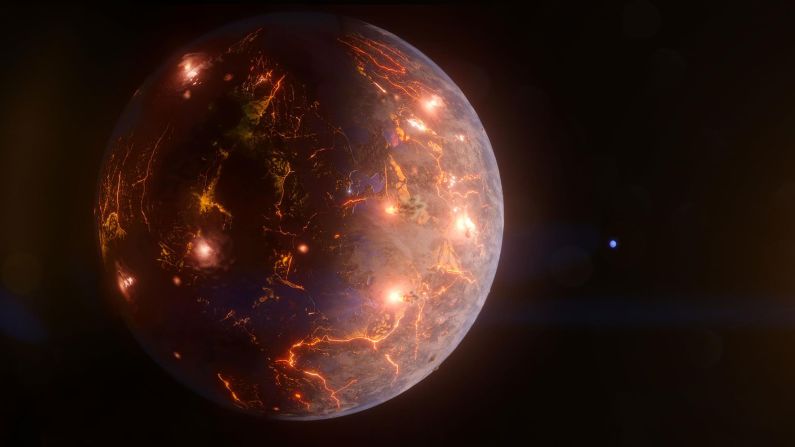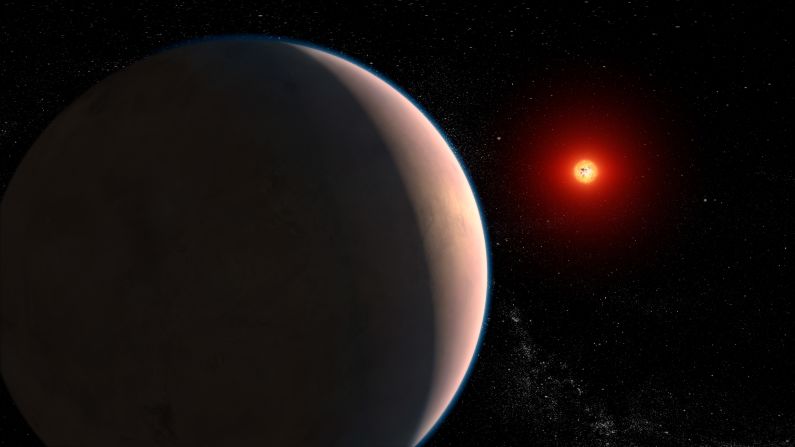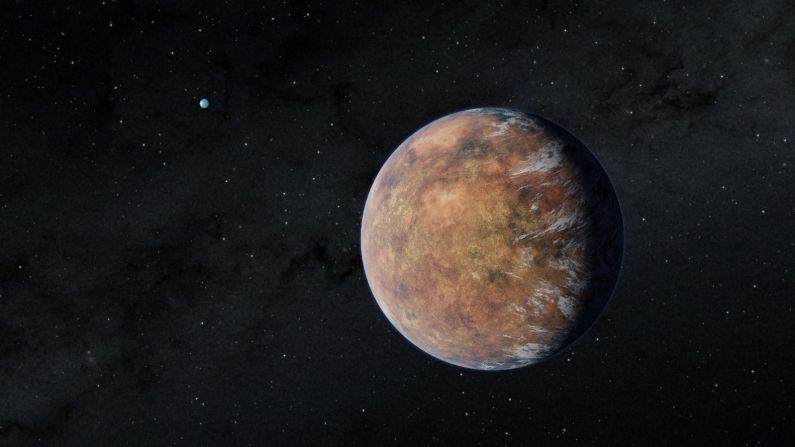Astronomers have detected the smallest rogue planet in our Milky Way galaxy, and it’s between the sizes of Mars and Earth. Rogue planets are free-floating planets that don’t orbit stars.
The planet, named OGLE-2016-BLG-1928, was found by astronomers using the Warsaw Telescope at Las Campanas Observatory in Chile.
The astronomers are part of the OGLE survey, one of the largest and longest sky surveys that began 28 years ago. On clear nights, the OGLE survey astronomers aim the telescope at the Milky Way’s central regions to observe millions of stars.
The study published Thursday in The Astrophysical Journal Letters.
These untethered planets could outnumber the stars in our galaxy, according to recent research, but they are hard to spot.
Given the fact that rogue planets don’t emit light like stars, or even enough heat to be visible in infrared light, these otherwise invisible worlds can be seen through microlensing events.
Microlensing occurs when the presence of something massive can actually warp space-time, like black holes. But this phenonmenoncan also occur around planets.
For instance, if a rogue planet is in alignment with a distant star, the light from that star will essentially bend around the planet, resulting in a magnifying effect. Researchers can use the changes in light around the planet to measure the planet’s mass.
“If a massive object (a star or a planet) passes between an Earth-based observer and a distant source star, its gravity may deflect and focus light from the source. The observer will measure a short brightening of the source star,” said lead study author Przemek Mroz, a postdoctoral scholar at the California Institute of Technology, in a statement.
“Chances of observing microlensing are extremely slim because three objects - source, lens, and observer - must be nearly perfectly aligned. If we observed only one source star, we would have to wait almost a million years to see the source being microlensed.”
Surveys like OGLE can monitor hundreds of millions of stars near the center of the Milky Way, affording them the best chance to observe microlensing events.
The duration of the microlensing event helps researchers determine the mass of the object. The shorter the event, the smaller the object. Typically, planets have microlensing events that last a few hours. But the one for this new planet only lasted 42 minutes – the shortest event confirmed yet.
“When we first spotted this event, it was clear that it must have been caused by an extremely tiny object,” said study coauthor Radoslaw Poleski, astronomer at the Astronomical Observatory of the University of Warsaw, in a statement.
Understanding rogue planets
Planet birth itself is a violent, erratic process. Gas and dust in disks around young stars clump together and gradually grow in size to form planets.
But collisions between objects on grander scales, or even coming too close to another planet in orbit around the star, or the star itself, can kick the planet out of its system.
And then the planet is on its own – it has gone rogue.
It’s also possible that lonely planets can form on their own in isolated clouds of gas and dust.
The Nancy Grace Roman Space Telescope, NASA’s upcoming observatory expected to launch in the mid-2020s, could reveal even more rogue planets.
Understanding these rogue planets could shed more light on the formation, evolution and disruption of planetary systems.
Scientists have only found a few rogue planets so far. But the Roman Space Telescope’s capabilities will allow it to find and characterize these roaming nomad planets.
The Roman Telescope will help researchers determine how these planets form by providing information about how many there are as well as their masses – which could help indicate their origin stories.
Recent research using estimates from ground-based telescopes has suggested that the Roman Telescope could find hundreds of rogue planets, helping scientists understand how common they are in the Milky Way. The telescope’s discoveries could reveal that there are actually more rogue planets than there are stars in our galaxy, according to a recent study.




































